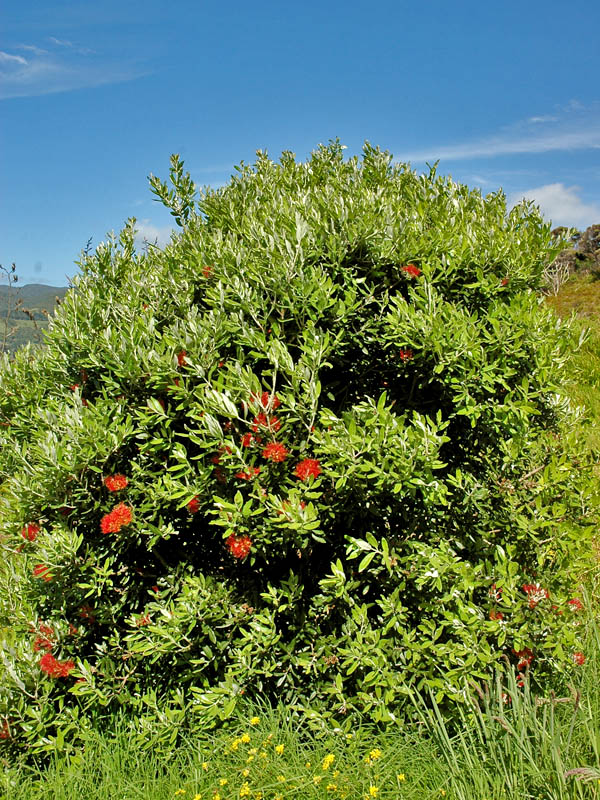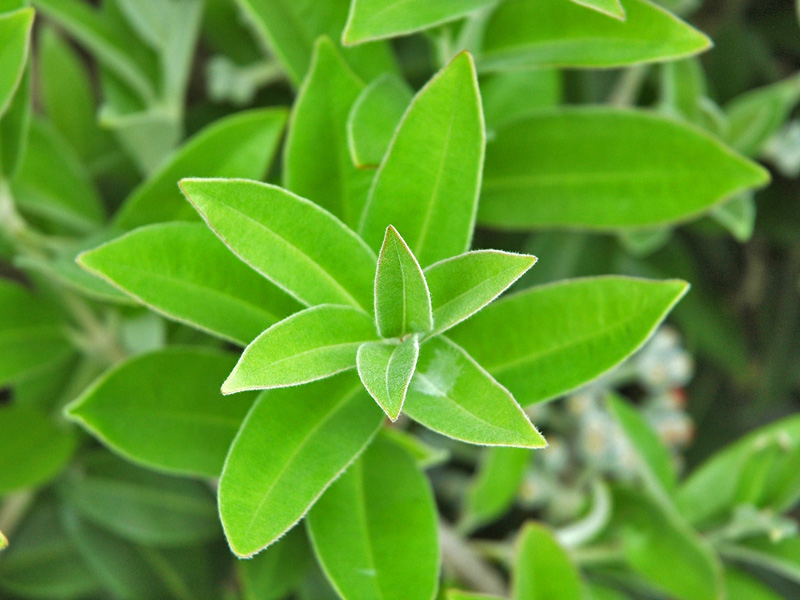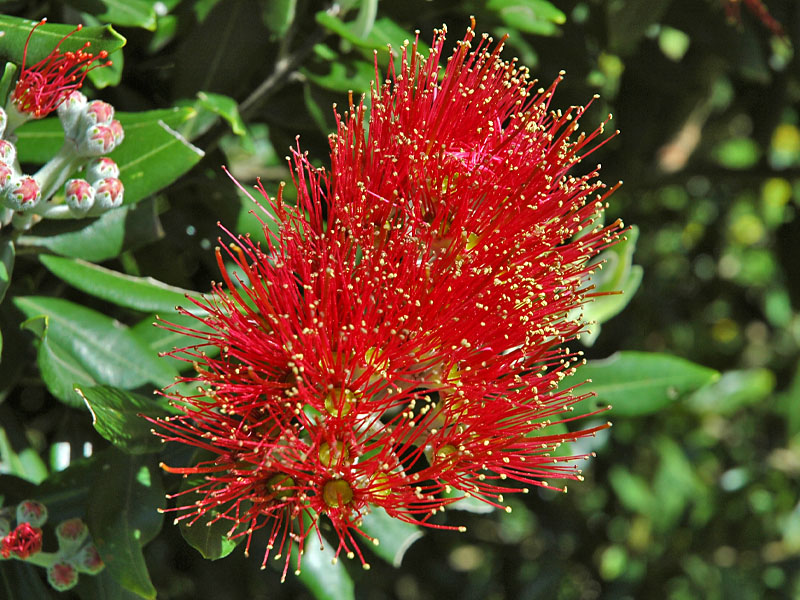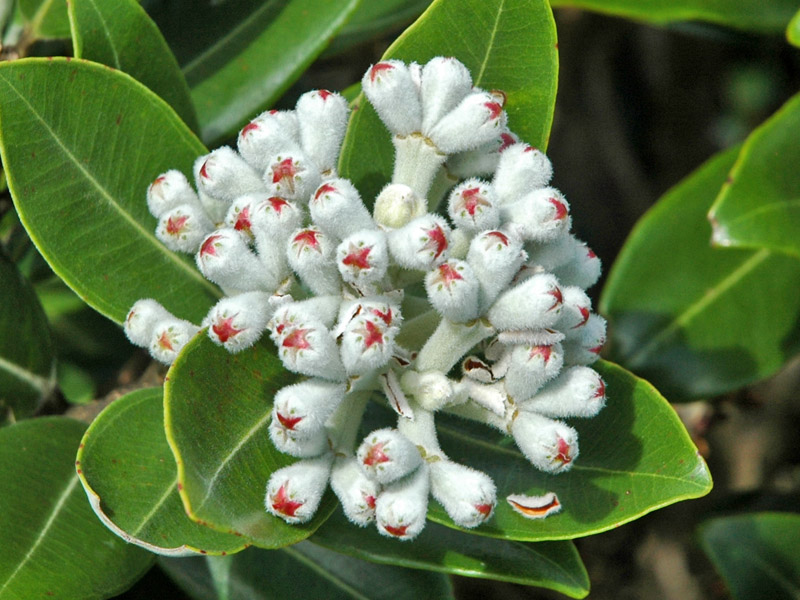| Shape | Large oval or rounded shape that is spreading with a low canopy. |
| Landscape | Windbreak along coastal shorelines because it is dense and salt tolerant. Can also be used as a hedge or specimen tree. |
| Propagation | Hardwood cuttings or by seed. |
| Cultivation | Well-drained, loam or sand soils that are moist to dry and in full sun. Tolerant to salt, smog, wind and drought. Extremely sensitive to frost. Neutral to slightly alkaline soil pH. |
| Notable Specimens | San Diego Botanic Garden, Encinitas, California, United States of America. |
| Habitat | Rocky cliffs and coastal shorelines. |
| Bark/Stem Description | Corky. |
| Flower/Leaf Bud Description | Large, oval shaped, covered in tiny hairs. Inflorescence buds are in clusters. Dormant buds are protected by bud scales. Vegetative and inflorescence buds are identical. |
| Leaf Description | Simple, oblong to ovate, 4 - 7 cm and can live for up to 2 years. Young leaves are hairy. Mature leaves have a wax coating and have soft dense hairs to reduce water loss. Leaf arrangement is opposite.
|
| Flower Description | Stamen are 4 – 7 cm. Inflorescence of broad compound cymes containing many flowers. Flowers in spring and summer.
|
| Fruit Description | Small (0.6 – 1.27 cm), hairy seed capsules with up to 30 in a cluster. Fruits develop in spring and summer. Capsules are opened by the wind to disperse seed. |
| Colour Description | The bark is a greyish-brown to dark brown colour. The buds are white to light green. Leaves are dark-olive green. The underside of the mature leaves are white. The flowers are a showy crimson red colour with yellow tips. The buds are light greenish-grey. |
| Texture Description | The barks texture is rough and stringy. The buds appear to be soft and fuzzy due to its tiny hairs. The leafs have a leathery texture when mature. |



